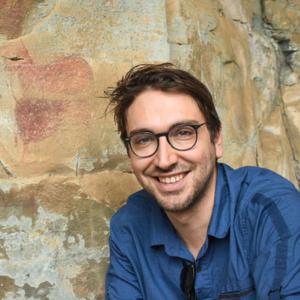The Interpreter: Laurent Frantz on ‘ancient DNA’
25 Jan 2023
LMU researchers unpack terms of art that have gone mainstream.
25 Jan 2023
LMU researchers unpack terms of art that have gone mainstream.
Some technical terms have made it into everyday discourse. In this series, LMU researchers explain what these expressions mean and give a brief account of how they entered the vernacular.
Laurent Frantz: “When an organism dies, the DNA in its body breaks down, like the other biomolecules. However, DNA is a very resilient molecule. It can survive for thousands of years in hair and bones, or in the seeds of plants. Over the past 40 years, researchers have developed new laboratory techniques for extracting these ‘ancient,’ strongly degraded DNA molecules from paleontological and archeological material. And with great success: Geneticist Svante Pääbo recently received the Nobel Prize in Medicine for reconstructing the genomes of long extinct archaic human species.

Prof. Laurent Frantz is Professor of Paleogenomics of Domestic Animals at the Faculty of Veterinary Medicine at LMU. | © LMU
Ancient DNA is more difficult to work with than ‘modern’ DNA, as there is often very little DNA present in old specimens. Special care must be taken with ancient DNA and laboratory work has to be carried out in extremely controlled settings to avoid contamination of the DNA by those handling the sample or from the environment.
Biotechnological progress has allowed scientists to work with these meagre quantities of DNA molecules. Perhaps the most important method is the polymerase chain reaction (PCR), a technique for amplifying DNA molecules. PCR makes it possible to produce DNA molecules in quantities large enough to be sequenced. Meanwhile, new sequencing technologies allow scientists to sequence whole genomes at a speed that would have been thought impossible just 15 years ago.
Access to genetic information from the past has revolutionized fields like paleontology, paleoanthropology, and archeology. Sequencing the DNA of ancient organisms, including that of Neanderthals and other archaic humans, has given researchers access to a kind of time machine, providing snapshots of the remote past. Geneticists can research the history of our species in unprecedented depth of detail and explore what distinguishes us from our distant cousins, the Neanderthals. Or they can investigate how we colonized the planet or how our bodies adapted to pathogens such as the bacterium that caused the Black Death. Or inquire into how and when we domesticated plants such as rice, wheat, and barley and made animals like dogs and horses into our companions.
Using genomic information from past ecosystems, including from extinct and living creatures such as mammoths, elephants, and wolves, researchers are investigating how species adapted or perished during the great climatic changes of the past million years. And so ancient DNA has huge potential to help us make predictions as to how wild and domesticated species will respond to the climate crisis.”
Prof. Dr. Laurent Frantz is Professor of Paleogenomics of Domestic Animals at the Faculty of Veterinary Medicine, LMU.